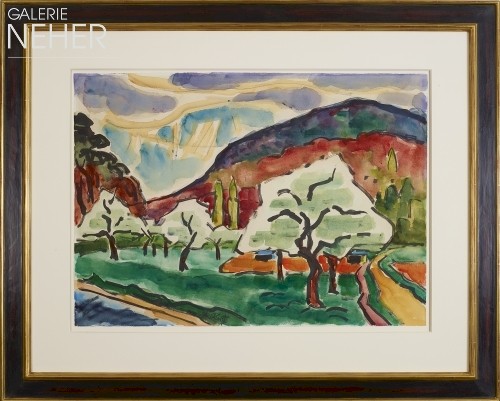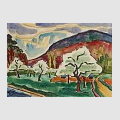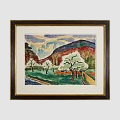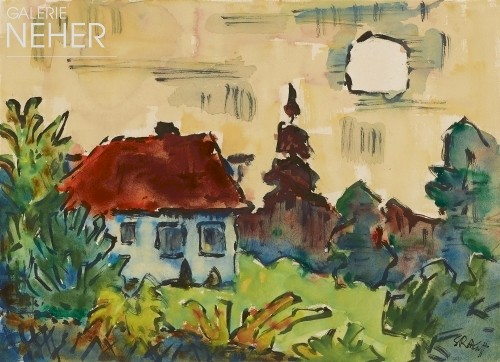About the work
The landscape as a central pictorial theme characterised the work of Karl Schmidt-Rottluff from his beginnings as an artist shortly after 1900 to the late paintings of the 1960 and 1970s. The painter, who, along with Ernst Ludwig Kirchner, Erich Heckel and Fritz Bleyl, was one of the founding members of the revolutionary artist group Brücke, also sacrificed none of his early creativity in his late work. While his painful arm did increasingly make painting in oil more difficult, he found new, adequate media in watercolour and ink painting that are in no way inferior to the canvas paintings.
He was sceptical to dismissive of the developments in the abstract painting of the postwar era and held to his once-discovered design ideas of Expressionist painting, to an orientation of art to the model of nature. The bold, powerful orchestration of colour – tested and developed in the early work periods – also characterises the paintings of his late work. Like this landscape from 1960 too: a flat colour zone painting in deep blue-green, glowing yellow and orange as well as rich green, enveloped by dark contour lines, provides the foundations of landscape representation. The trees in the meadow of the foreground are hulled in a delicate, vernal raiment and might be called the actual protagonists of the painting – captured in reduced, stylised flat forms, as a cipher, so to speak, they nonetheless bear witness to the immediacy of the experience of nature.
Text authored and provided by Dr. Doris Hansmann, Art historian
Studies of art history, theater, film and television, English and Romance Languages at the University of Cologne, doctorated in 1994. Research assistant at the Art Museum Düsseldorf. Lecturer and project manager at Wienand Verlag, Cologne. Freelance work as an author, editor and book producer for publishers and museums in Germany and abroad. From 2011 chief editor at Wienand Verlag, from 2019 to 2021 senior editor at DCV, Dr. Cantz’sche Verlagsgesellschaft, Berlin. Numerous publications on the art of the 20th and 21st centuries.







